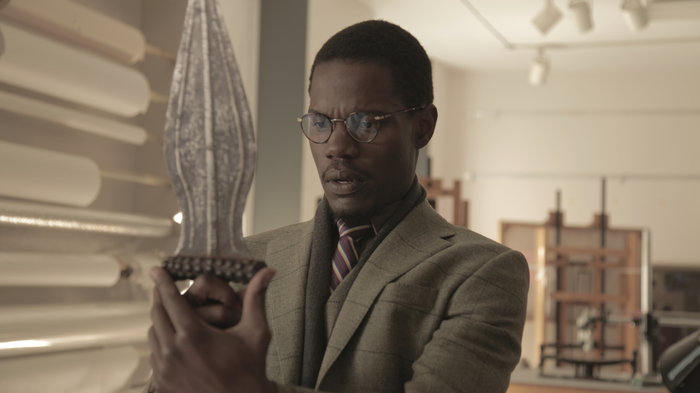After a brief prologue, Spike Lee’s Da Sweet Blood of Jesus opens in the same Brooklyn church that was the centerpiece of his Red Hook Summer. The moment seemingly connects Sweet Blood not just to the 2012 film but also to movies further back in his career, since Red Hook itself was billed as part of Lee’s “Chronicles of Brooklyn,” which include his early classics like She’s Gotta Have It and Do the Right Thing.
The scene is something of a red herring, though. For one thing, most of Sweet Blood takes place on a large Martha’s Vineyard estate, not in Brooklyn. It’s also a remake of Bill Gunn’s 1973 moody horror film Ganja and Hess (which just played as part of Film Society of Lincoln Center’s “Tell It Like It Is” series) and tells the story of a wealthy archaeologist, Hess (Stephen Tyrone Williams), who turns into a vampire after being stabbed with an Ashanti dagger by his research assistant (Elvis Nolasco). Later, Hess falls in love with his assistant’s ex-wife, Ganja (Zaraah Abrahams), and turns her into a vampire as well.
The movie’s story, in other words, stands out quite starkly in Lee’s filmography. It does share Red Hook Summer‘s somewhat erratic approach to narrative, but even in this respect, it pushes the envelope much further, a decision that actually makes Sweet Blood a more provocative — and at times mesmerizing — movie than Red Hook, though one that can still be baffling to watch.
There might seem like no better moment to release a remake of a 1970s vampire horror film, but Sweet Blood will disappoint Twilight fans in the same way that Ganja and Hess let down anyone in 1973 who expected Blacula. Hess’s desire here is treated as an addiction, as in Jim Jarmusch’s vampire film Only Lovers Left Alive, but with none that movie’s elegance. For Hess and Ganja, satisfying their desire for blood is a violent and ravenous affair, and the explicit way Lee films their feedings suggests he has carried over some lessons from his 2013 remake of Oldboy.
More off-putting than the violence—and also more intriguing, frustrating, perplexing—is how Lee eschews any simple approach to narrative while telling what ultimately is a simple story of a man and woman who must reconcile their insatiable desire for blood with the immoral actions required to satisfy it.

9(MDAxOTAwOTE4MDEyMTkxMDAzNjczZDljZA004))

